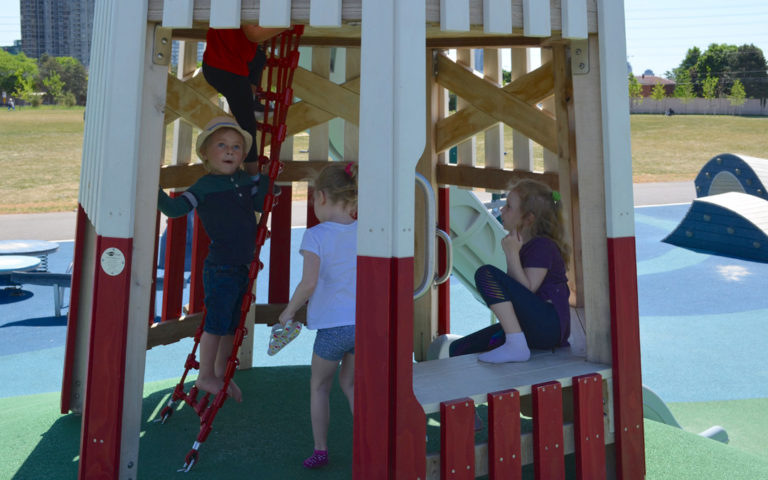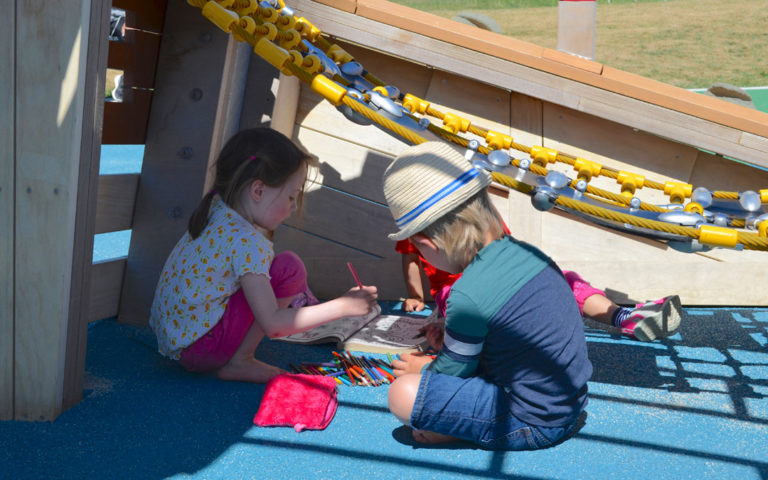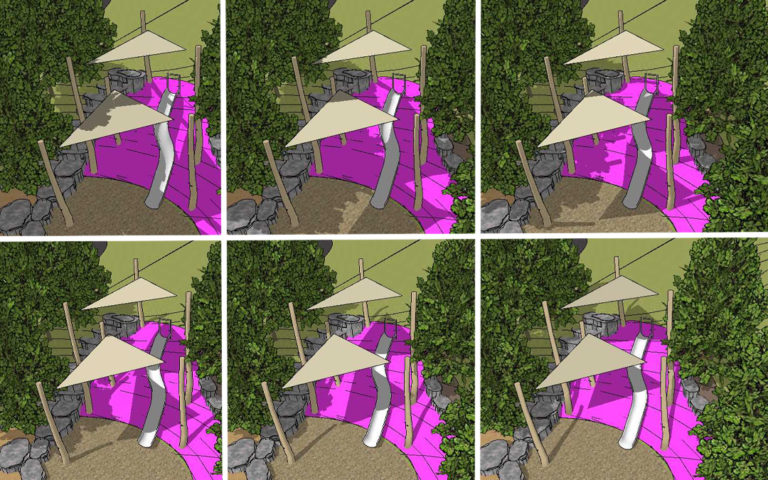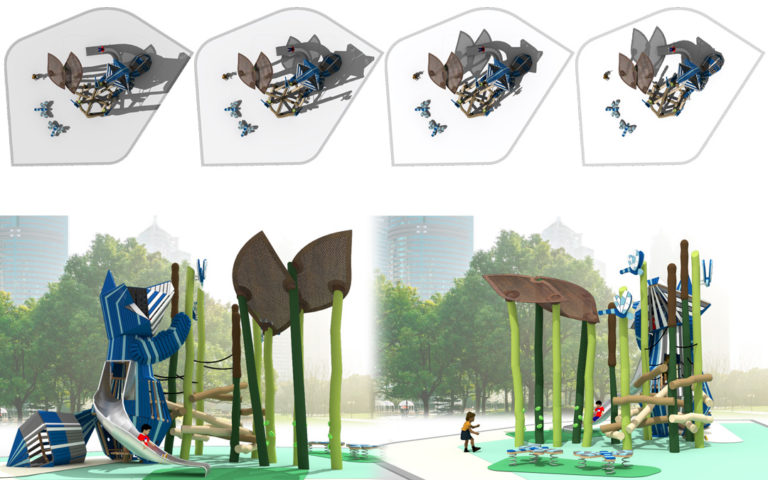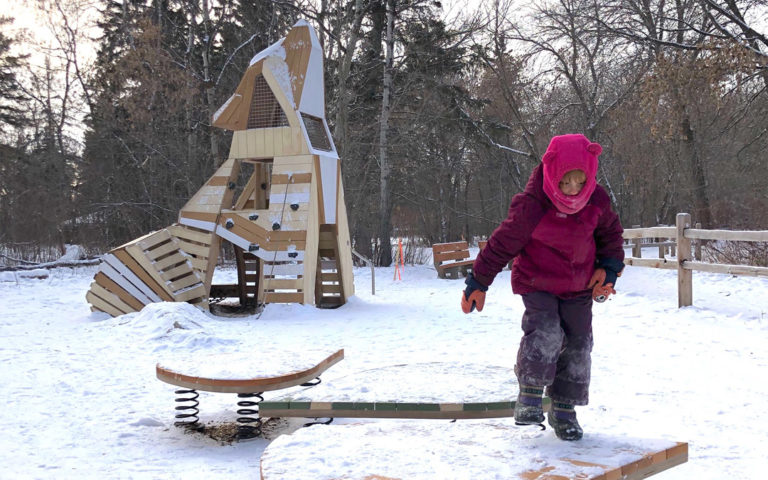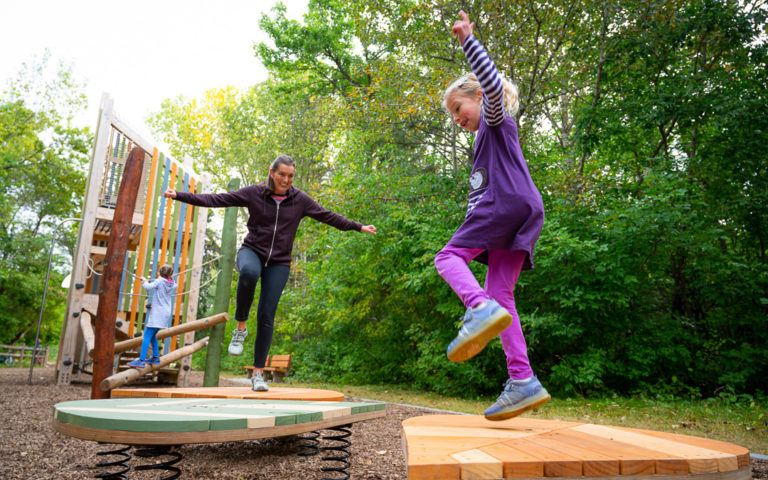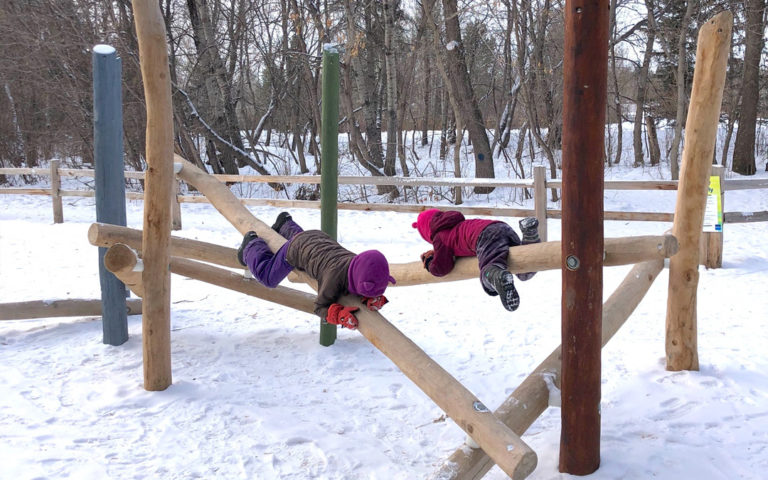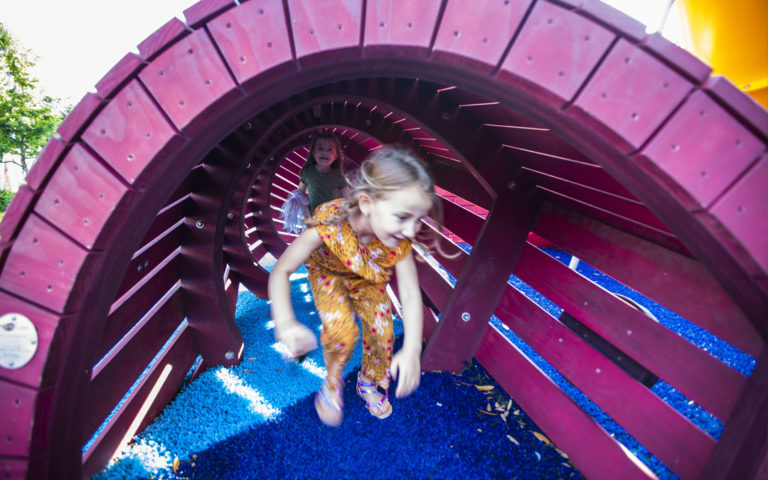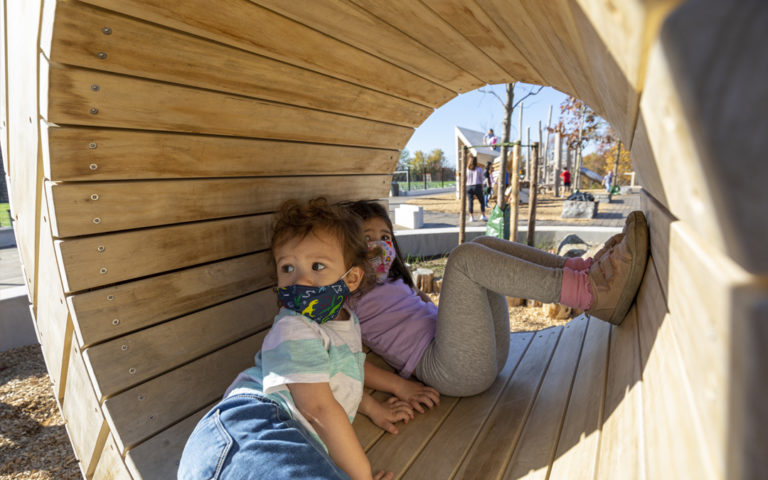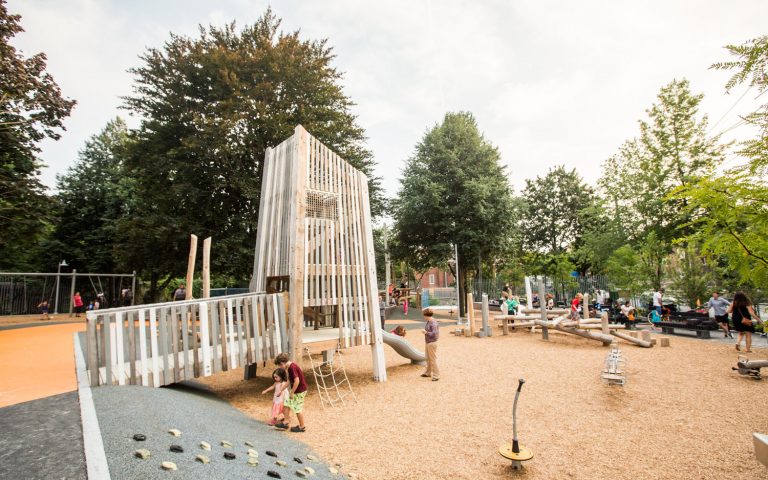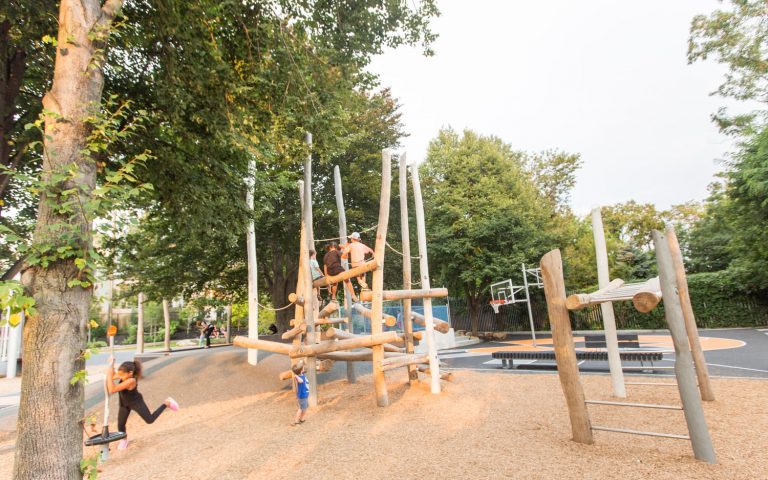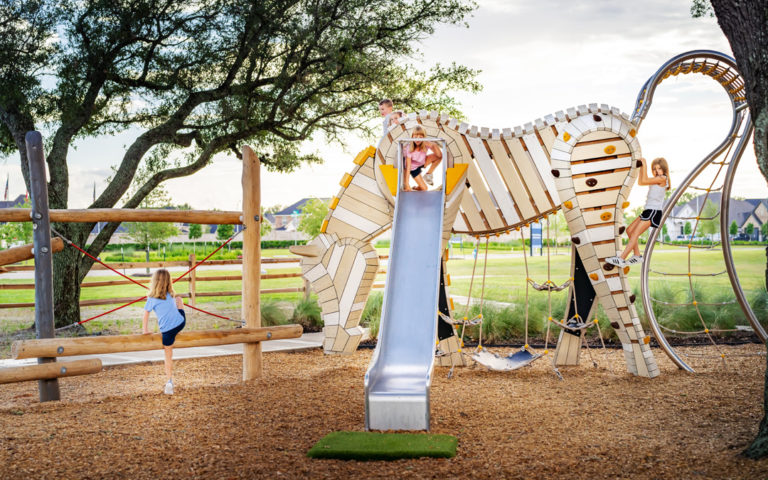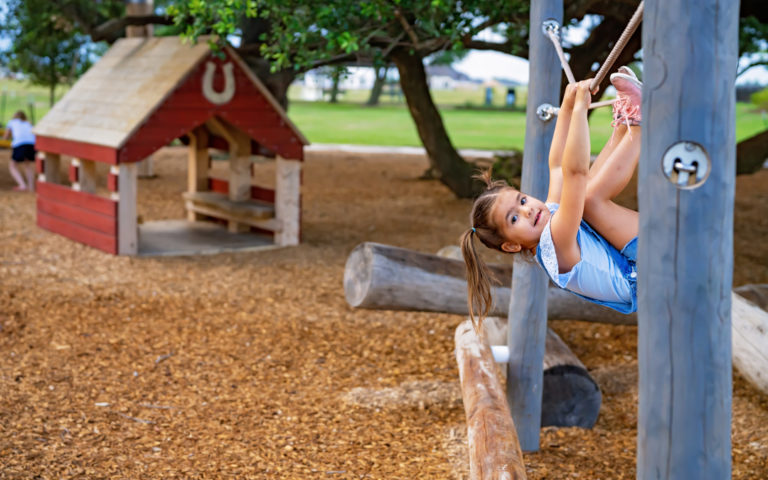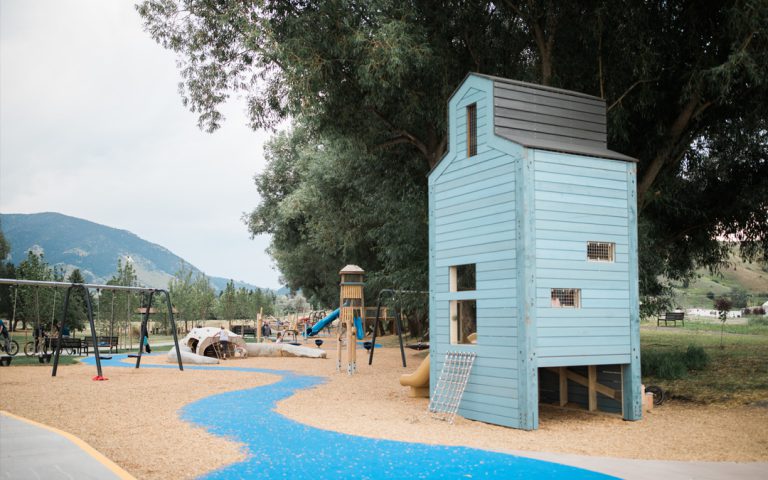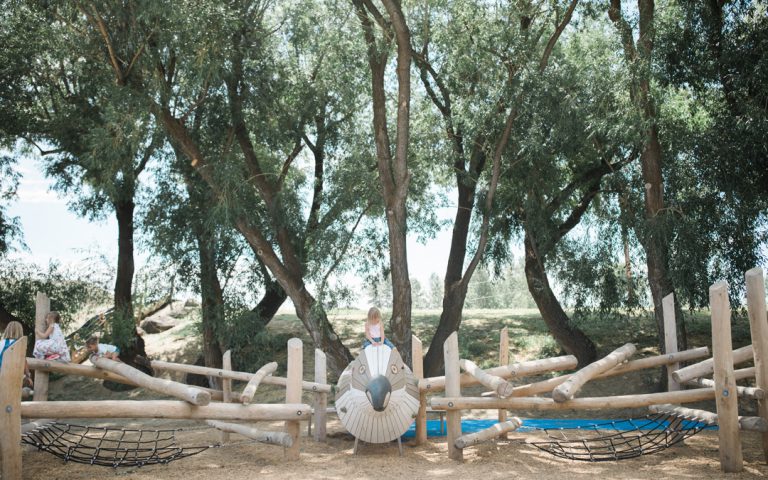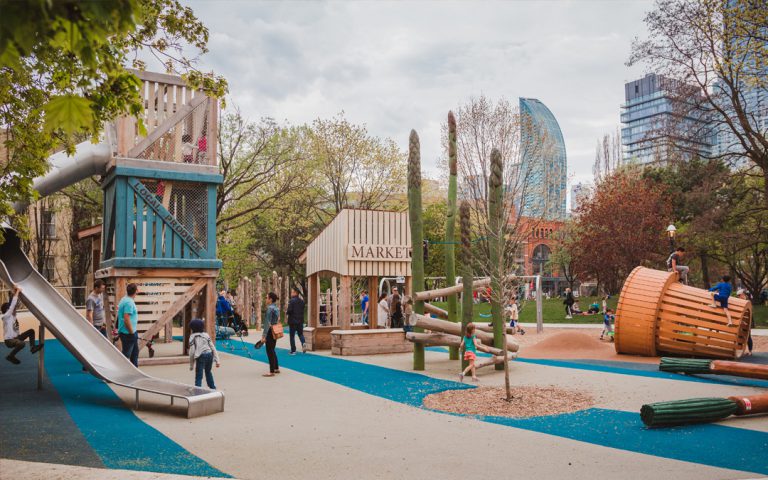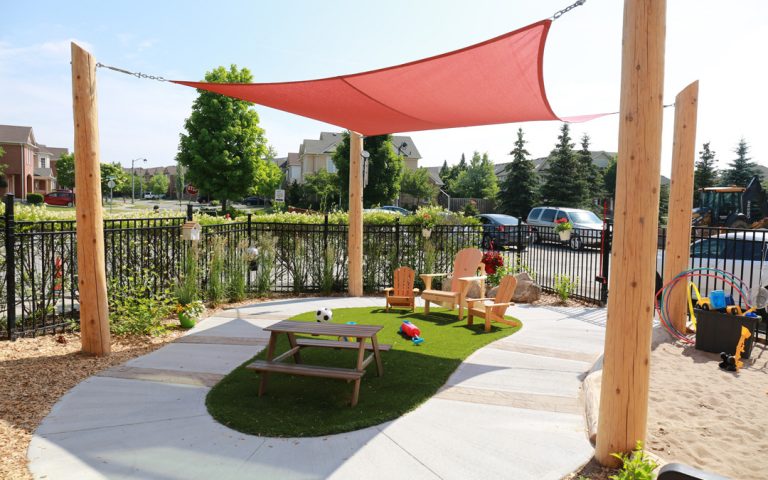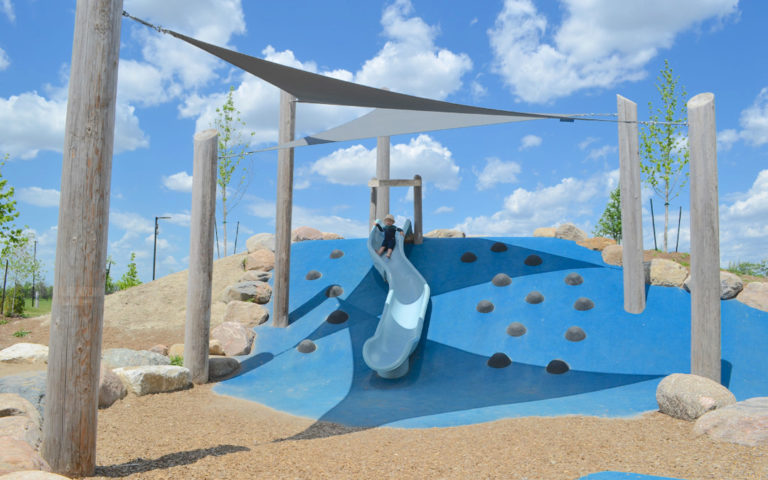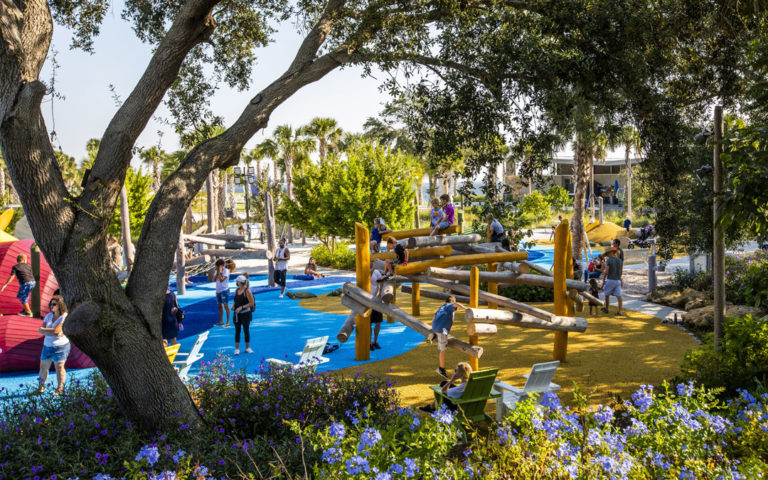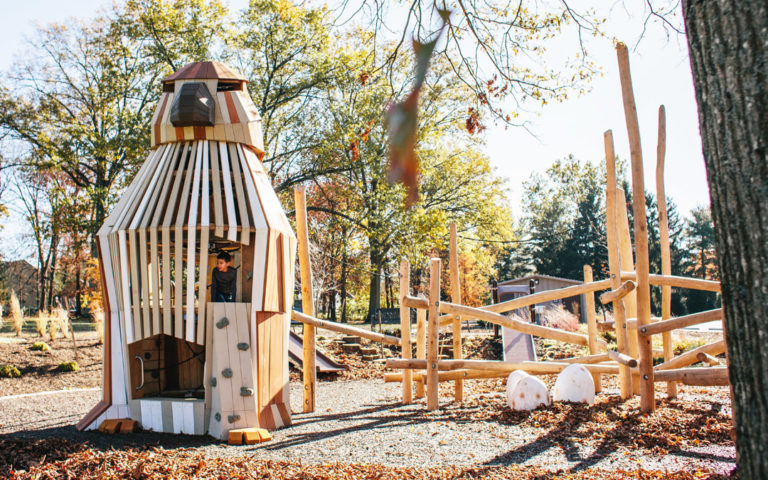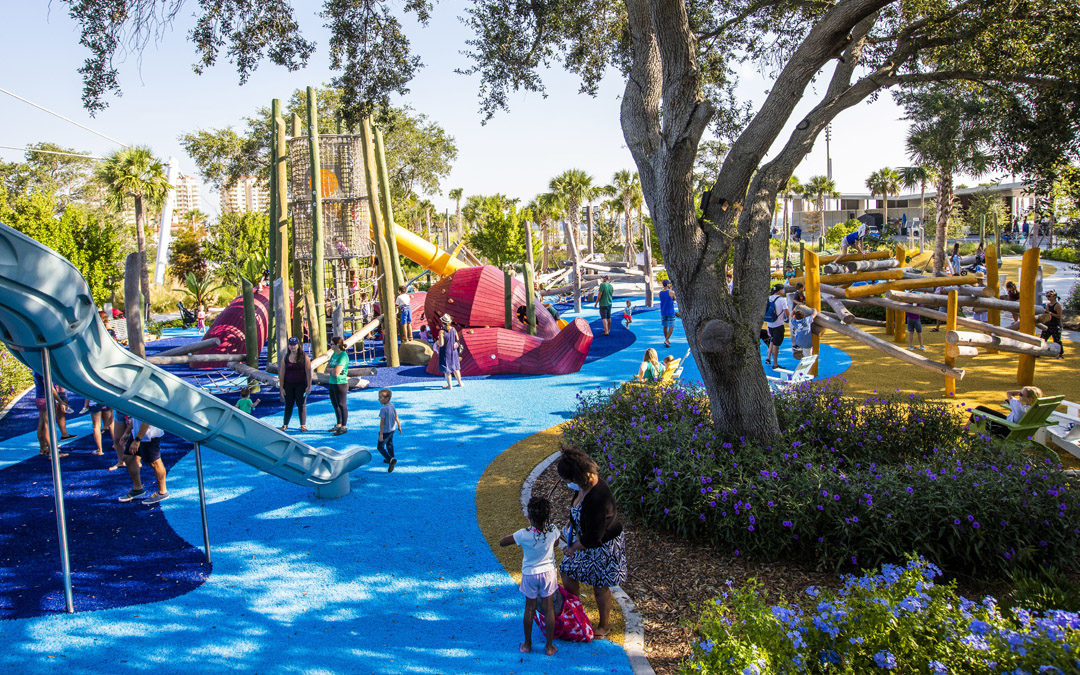
Grow Me Some SHADE: Trees + Shade on Playgrounds
Shade is SO important.
That very first glimpse of a new playground is always exciting, but our experiences of the space can vary based on some important factors: visual appeal, family-friendliness, opportunities for high and low challenge, places to rest, and – arguably one of the most important factors – is there shade?
I know from my own experience and interactions with parents at playgrounds that shade is often THE deciding factor on which playground people visit on hot days. (Alex Waffle)
As parents, we want our children to explore and discover every corner of the playground (both inside and outside of structures). On those scorching hot days, they need opportunities to rest and shelter from the heat to re-fuel and resume their adventure. If the playground space does not offer a reprieve from the heat, the amount of time you stay will be drastically reduced, and the play value will naturally suffer.
As adults (and observers) we also need shade! Crowding under singular trees or repositioning every few minutes to avoid direct sunlight, is not ideal or enjoyable. If the playground environment is comfortable, it is a win-win for all!
Is shade just a “hot climate” concern?
We experience four distinct seasons where we are located so we are used to a variation in climate. Our summers can get very warm, but we also get some icy-cold, sunny winter days. To accommodate for those swings in climate, we often conduct shade studies at the design phase of custom projects. With playgrounds installed in many different geographic regions, we’ve developed first-hand experience of the importance of shade at different times of the year, in different climates.
In cooler climates, we’re finding that more variety is best (many kids don’t get enough sun in the winter and so we want to maximize exposure for them). Deciduous trees are naturally good at creating shade. So too are structures that offer interior/exterior play opportunities. Hotter climates need more intensive shade solutions, and shade structures are sometimes the best option (Alex Waffle)
Shade is important in all climates. Thinking through when to maximize shade and when shade is less critical is a part of the design process. In Edmonton, Alberta, at 53 degrees north latitude, winter sun is welcome when the days are short! The Sir Wilfrid Laurier coyote playground, set in a deciduous forest, provides ample sun during the winter months, but plenty of shade during the summer.
How do we design for shade?
Shade is not only important for the cooling effect, but it also plays a huge role in design. Shade is dynamic as it moves during the day. Our focus on shade design is to cool the play spaces during the peak sun hours, but also it can be fun to play with light through design. (Joost van Haaster)
Playground structures and sculptures, with spaced cladding, provide some areas of shade for children at play. On a hot day, you will often see children congregated in these shady spaces, just hanging out. The ideal playground offers multiple places with shade, not just in the structures themselves but throughout the space.
Taking advantage of existing trees in site design can be tricky but can result in an incredibly successful playground.
There are several examples of the incorporation of existing trees that have created ideal spaces for play. The landscape architects at KMDG did a masterful design, incorporating existing trees at Hoyt-Sullivan in Somerville, Massachusetts.
At Amira Park in Tomball, TX, all of the play structures were carefully sited by Kudela and Weinheimer Landscape Architects to create shade from the hot Texas sun.
At Story Mill Park in Bozeman, MT, designed with The Trust for Public Land and Design Workshop, the play structures are spaced along a linear path under the shade of a bank of willow trees.
At St. James Park, the towers and, in particular, the stainless steel slide exit (which is intentionally north-facing) was designed with PMA Landscape Architects to take advantage of maturing trees that also serve as a divider to a busy street.
Shading slides or slide exit zones is a major consideration for [us] as designers, especially when we consider stainless steel slides in sunny climates; the extent to which shade is needed depends on slide location, orientation, and material. (Janelle Zwart)
If trees are not available at the playground or are newly planted, it becomes even more important to provide interior volume within structures themselves where playground users can find shade.
Alternate Shade Options
Shade sails can be a great solution in a variety of situations. They can add colour and dimensionality to a playspace. They create distinct lines and shadows as the sun moves. They can also delineate areas of play, for example, a junior play or senior play area.
Many custom options for shade sails are available, which allow them to become a part of the playground design rather than seeming like an afterthought.
Shade sails can be used while newly planted trees are still small, casting shadows that aren’t yet usable as shade space. They can also be used seasonally. They can be (and should be) taken down in winter in cool climates to provides access to sun when cold. (Alex Waffle)
Shade sails often have the added benefit of being able to connect to structures. At Aldergrove, we did a retrofit to add shade sails after the initial install to shade the slide exits until the newly planted surrounding trees mature. (Alex Waffle)
In most environments, trees add an ecological, psychological, and aesthetic element to the space, but they can’t always be planted or are not of a maturity where they’re helpful in providing shade.
Often, the ideal solution is to use both. A shade sail can be a great short-term solution, and a strategically planted tree can work well in the long run. The tree will have time to develop during the lifespan of the shade sail and can take over the shade duties once the lifespan of the shade sail is at its end. (Janelle Zwart)
Shade and Maintenance
Naturally, there are advantages and disadvantages to think about when designing for and constructing/planting for shade. Lots of trees might provide an abundance of shade opportunities, but will the maintenance departments love (or hate) our playgrounds?
Lots of trees = leaf litter, trimming, and regular maintenance – these are really important realities.
As designers, we need to understand the value of natural shade (and the expenses that come with clean-up) vs. the value of shade sails (and the expenses that come with fixing and maintaining them). From an equipment perspective – it also means leaf litter should be removed from the equipment and not be allowed to build up and sit, especially in wet climates. (Melissa Quinn)
Conversations with maintenance and park/forestry departments need to happen before playgrounds are designed and installed to ensure that all parties are on the same page for the long-term success of the play space. The goal of any playground project is to maximize enjoyment by people of all ages and abilities. Providing shade is key to that maximization.
Up next? HOW TO actually incorporate trees in your playgrounds!

